Who Owns The “Flour City”?
by Chris Clemens
In 2009, a local bread maker opened its doors under the name ‘Flour City Bread’. A favorite in Rochester, visitors to the Public Market typically insist on making a stop while on site. A year later, another local culinary artisan started a business using the name ‘Flour City Pasta’, and while they both make gluten filled goodness, it’d be tough to say that they are direct competitors. Flour City Bread has a brick and mortar location in the Public Market in downtown Rochester and makes breads like Miche et Al, Pain au Levain and fougasse, among others. Flour City Pasta also has a brick and mortar, but in addition, sets up at a lot of farmer’s markets between Rochester and Syracuse. They make fettuccines, gnocchis, pappardelle’s, and a few other pasta products and also are widely celebrated as a great local food stuff. According to this Indiegogo campaign I was told of today, earlier this summer, Flour City Pasta served a cease and desist to Flour City Bread while filing a trademark copyright with the Federal government, claiming rights to the ‘Flour City’ moniker. So, let’s take a quick look at where that nickname was born.
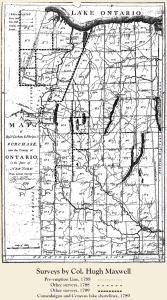
Source: Wikipedia
In the late 1700’s, a couple guys named Gorham and Phelps attempted to buy a humongous tract of land that stretched all the way from Sodus to Lake Erie and southwards near Pennsylvania. The area made up six-friggin’-million acres of land, much of which messed with ownership of a bunch of Native American tribes. When they couldn’t handle the costs of buying the land, it was broken up and divided a whole bunch of different ways. One hundred acres on the western shore of the Genesee River just south of Lake Ontario was given to Ebenezer “Indian” Allen under a contract where he would set up a grain mill using the power from the river to manufacture flour. The 100 acre tract was literally uninhabitable, and because of the rattlesnakes, malaria and general unpleasantness of the whole section, no one wanted it. After the mill was created, it was sold a bunch of times before Nathaniel Rochester picked it up on November 8, 1803.
The mill site remained undeveloped for a bit until 1811 when Rochester finished paying and got the deed. Then, in 1817, the Village of Rochesterville was officially established and named in honor of the guy who set the stage for it all. When in 1821 Monroe County was formed, the Village of Rochesterville was established as the county seat, and then in 1823 they removed the “ville” from the name.

Source: Rochester Municipal Archives
Around the same time, the Erie Canal was getting its finishing touches, and once completed in 1825, it allowed travel across New York to drop from three weeks down to a mere three days–and, it passed over the top of the Genesee River in Rochester. Commerce and industry along the water route began to boom. The import and export of products out of towns and New York cities started to multiply exponentially. In fact, in 1817, the Village of Rochesterville was populated with only 700 people, and just 13 years later it numbered over 9,000! Guess how Rochesterians were making a living during that decade? Flour.
In just the first week and a half of the Erie Canal opening, Rochester had shipped 40,000 barrels east along the Erie Canal from the myriad of mills that had set up shop on the river.
Finally in 1834, we were officially made a city, and the founding member’s son-in-law was made our first mayor. That year, the population of the city had grown to 13,500 and there were more than twenty grain mills scattered just around the High Falls area. Though, at one point, the Irondequoit Creek that travels through a nearby suburb of Rochester had as many as 22 different grain mills on it, in just a few miles of creek and it wasn’t even in the city. Rochester was already known colloquially as ‘The Flour City” because for about ten years we were the largest flour producer in the entire world, with Baltimore taking an honorable 2nd place. I spent hours today trying to determine when the very first use of ‘Flour City’ took place, but could only find historians who claimed that the moniker was born in the early 1800’s when business was booming, not the documented first use. At the very least, historian’s in the second half of the century were using the term to describe the city’s founding, so it’s existed for at least 150 years.
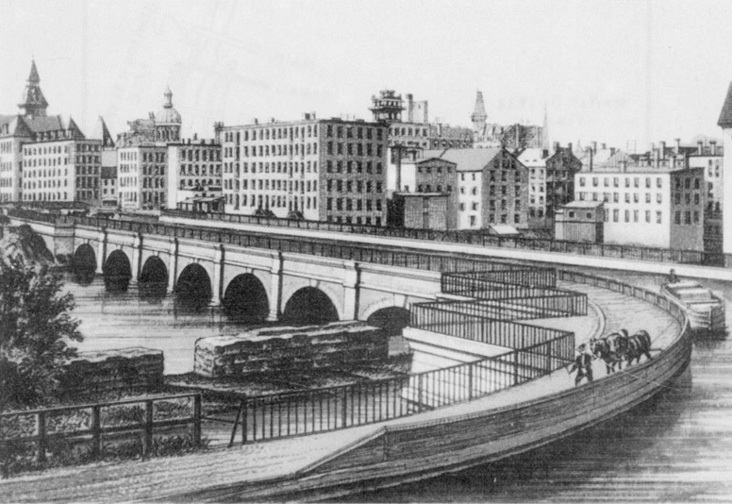
Source: eriecanal.org

Source: justteejay.wordpress.com
Flour milling was a tough gig though and over the next couple decades the industry would suffer fires, freak accidents, price gouging wars and the introduction of a railroad system to allow mills located not just on the Erie Canal to also be successful. During the second half of the 19th century, industry in Rochester changed and though George Ellwanger of Germany would go on to be the owner of one of the more famous of them all, numerous nurseries blossomed all around the city. Noting the change in industry and the city’s scene, our nickname was cleverly replaced with “The Flower City” in 1859. The current city logo is a interpretive combination of an old grist mill and a lilac that was created in the mid-1970’s.
Over the years, countless businesses have established themselves in the Rochester region with brands that pay homage to the city’s founding. Flower City Yoga, Flower City Printing, Flour City Bending, Flour City Growlers, Flour City Pizza, Flour City Station, Flower City Glass and even a conference called TedXFlourCity. Additionally, Flour City Bread and Flour City Pasta who at least each have a business that uses flour in their products.
Rochester might have a cool history with flours, but it also has an interesting history with trademarks. The Dawn Donut Rule was created in 1959 when Rochester supermarket Hart’s Local Grocers started using the word ‘Dawn’ with some of their donut displays, but weren’t selling donuts that were made by the company that made Dawn’s Donuts. It was determined that: “if the use of the marks by the registrant and the unauthorized user are confined to geographically separate markets, with no likelihood that the registrant will expand his use into the defendant’s market, so that no public confusion is possible, then the registrant is not entitled to enjoin the junior user’s use of the mark.” What made this ruling even more interesting was the very thing you’re using to learn about it: the internet. Even though a vendor might have a brick and mortar location in a separate region and may not draw customers directly to their shop and therefore not be a competitor, if they have an online shop it means anyone anywhere can buy. As a result, the Dawn Donut Rule only applies…. when… it actually applies?
Interestingly, Flour City Pasta does have an online store where you can purchase products and Flour City Bread doesn’t. But, it could still strongly be argued that they’re not even direct competitors because, who doesn’t want to eat pasta AND bread at the same meal (no offense to those with gluten allergies, of course). Does it further complicate the decision to include the fact that Flour City Pasta doesn’t even have a Rochester address? Their website indicates that their address is in Mendon (whoops!) Macedon which actually isn’t even in the same county.
I reached out to Anne LaBarbera, a Syracuse based attorney, who helped me understand a bit more of what was happening. She referenced the company Apple Inc. who was in charge of creating the laptop I’m writing this post on and how they have nothing to do with apples. Because the trademarked term could never be confused by the general public to think that Apple Inc. was suddenly in the orchard business, it’s not an issue. Maybe the lawsuit would be comparing Apple vs. Orange? Just kidding. As an aside, remember when the University of Syracuse entered a trademark dispute for ‘orange’? She continued…
…when such a trademark exists, it generally only allows the trademark holder to block use of the term in association with similar products. So to continue with the Apple example, I would not be able to start a company named Apple that manufactures microchips or mother boards without running into trouble, but I could very likely start a company that makes cleaning products or chewing gum and call it ‘Apple’ without being in violation of Apple, Inc.’s trademark. Because Flour City Bakery and Flour City Pasta both make food products made from flour, this is likely the reason for the cease and desist letter. The fear on the part of Flour City Pasta would be that their reputation or ‘goodwill’ to use the legal term is being used by Flour City Bakery to sell their goods. Put another way, the trademark holder is asserting that the bakery is trying to confuse consumers at the holder’s expense.
So, realizing that you’re probably sick of reading by now, let’s wrap this up shall we? It seems that there’s still a few questions to be answered about this debate:
- When was the moniker “Flour City” first actually used and who used it?
- Can you own a nickname?
- Are Flour City Bread and Flour City Pasta close enough of a product that the court would consider their flour-based products to be in direct competition if it came to a lawsuit? If so, Flour City Pizza is probably getting a letter too.
- There’s currently no lawsuit, just a C&D. The issue is, does Flour City Pasta have the right to trademark a nickname for the city. And, if so, does the city have to ask permission if/when that’s granted??
Feel free to chime in and leave a comment (but, play nicely please) to help clear any of this up for all of us! In the meantime, I may go register the domain at ExploringFlourCity.com 😉
October 6, 2015 – Update:
The same day this post went live, I was asked to sit in on one of my favorite podcasts and discuss it a bit more. To listen to the full 1-hour discussion with Food About Town‘s host Chris Lindstrom, head over and take a listen. Spoiler Alert: during the recording we had a surprise call-in from Flour City Bread’s owner.
Since then, the owner of Flour City Pasta has announced that they are dropping their intentions to pursue the C&D on their Facebook Page.
-
Resources and Additional Links
International Trademark Association: “Is the Dawn Donut Rule Still Viable?”
Wikipedia: History of Rochester, NY
“Rochester History” Volume XXXIII, July 1971
Wikipedia: Phelps Gorham Purchase

Chris Clemens is the Founder/Publisher of Exploring Upstate. From his hometown in Rochester, he spends as much time as possible connecting with the history, culture, and places that make Upstate New York a land of discovery. Follow him on Twitter at @cpclemens

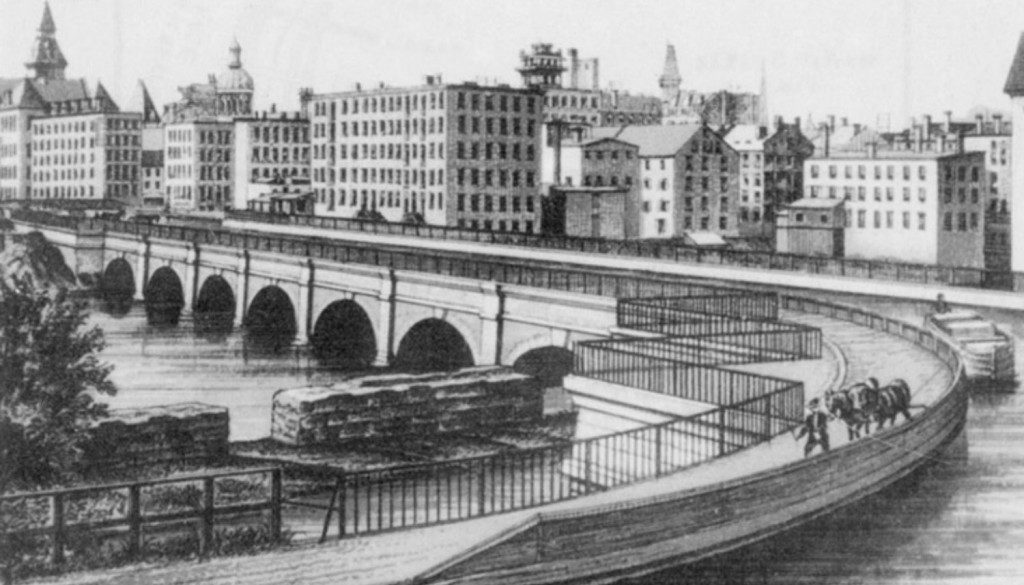

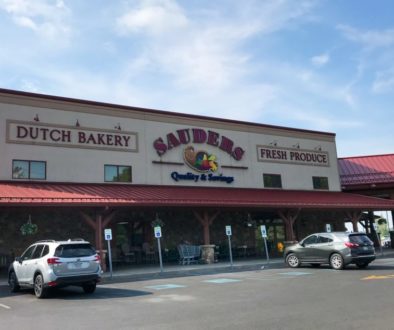
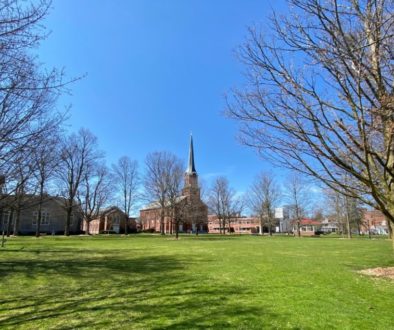

October 4, 2015 @ 8:52 am
An article in the Buffalo Daily Courier for 18 Feb 1856 announces the formation of the Flour City Bank in Rochester.
October 5, 2015 @ 11:13 am
Nice find! Thanks Paul
October 4, 2015 @ 9:03 am
Very nice article, I enjoy both of these products when visiting the Public Market. Only issue with the article is that the Town of Mendon is in Monroe County. Although the mistake could easily be made when looking at old maps as it originally was in Ontario County. Interested to see how the trademark war settles out.
October 4, 2015 @ 2:46 pm
I was also going to state that the Town of Mendon is in Monroe County but you beat me to it.
October 5, 2015 @ 11:12 am
Thanks to both of you guys, good eye(s)! I knew they weren’t in Monroe County, but wrote that sentence a bit too fast and mixed up my words. They’re out of Macedon.
October 4, 2015 @ 9:05 am
Trying to remember what I learned in a Media Law class, and I believe to successfully register a trademark, the name must have a double meaning (which flour city pasta does) and must not be in common use. I can’t imagine they would successfully get Flour City trademarked. They’re trying to trademark a completely unoriginal, unimaginative brand, which is just silly.
October 5, 2015 @ 11:36 am
Yeah, the law part of it is interesting, but way over my head!
October 4, 2015 @ 9:30 am
Nice entry, Chris! FYI, They are located in Macedon, not Mendon as the article states.
October 5, 2015 @ 11:14 am
Great catch! Thanks Roni. After 36 years of living in the region I still get things mixed up! Fixed.
October 4, 2015 @ 10:22 am
A strong strategy when you’re trying to protect your intellectual property:
Go and talk to the other business owner and respectfully state your case. Or if talking face to face is fearful then send a personal letter or email. If the other business owner is cooperating then you can work out an understanding. If/When the potential middle finger comes back to you then have a legal representative draft a cease and desist.
And as they are drafting their legal side you will begin drafting a press release. It will explain your business, your background, your intellectual property and rights, and what you are looking to protect. You will explain how you reached out to the other business(es) and their response. You will send this to every main stream media outlet and blog you can find. You will also begin flooding social media with your side of the story and what you’re looking to accomplish. This will sway the court of public opinion to understand your side before formulating their own opinion and you will most likely maintain your integrity and reputation in the area.
In a case like this one: Flour City Pasta looks like they’re keeping quiet and trying to let the facts speak for themselves. Businesses often under-estimate the power and effect of the court of public opinion and end up losing more customers and loyalty than they realize.
There’s two possible directions for this: 1. The Cease And Desist was a scare tactic without teeth and nothing further will happen. 2. Flour City Pasta will pursue the case and the legal team’s angle will be confusion of Flour City Bread’s name impeding on the potential business of Flour City Pasta (i.e. ‘Customer walks into Flour City Bread, asks about their pasta selection thinking Flour City Pasta and Flour City Bread are the same company’). The basis will be the trademark owned by Flour City Pasta: FLOUR CITY PASTA.
We’ll see what happens I guess.
October 5, 2015 @ 11:33 am
Thanks Matt. You’re totally right that this could go a few different ways. My hope is that it ends amicably for every one and Rochester can get back on track with making a lot of complementary foods.
October 5, 2015 @ 8:32 am
3 days to cross the state seems like a very short period of time at mule speed. Are you sure about that?
Also, it should be noted that Apple, Inc., doesn’t have much right to the “apple” trademark; Apple Records is the primary user and they’re the ones that would sue anyone (including Apple, Inc.) moving into non-computer territory.
October 5, 2015 @ 11:32 am
Hey Powers!
The time that it took for a boat to travel from edge to edge in the state isn’t a perfect science. Different size boats and different weights of cargo would impede or improve on travel times. And, obviously there’s weather, traffic and a whole bunch of other factors. It took approximately 46 hours for a boat to leave Rochester and arrive in Utica. So, to say the entire state could be covered in 3 days might be a bit liberal in estimation, a habit I’m often found guilty of, maybe it was 4 or 5. Regardless, the advent improved travel in the state exponentially. Here’s a fun link that discusses travel times: http://www.eriecanalway.org/documents/ECNHC_TickettoRide_Q4_final.pdf
The whole Apple Inc. vs. Apple Corps thing has been going on longer than I’ve been alive, so wrapping it all up here would be too complicated. But, it’s definitely an interesting part of the conversation!
October 6, 2015 @ 6:46 am
I think the culprit here is the grantor of the trademark. In my mind, “Flour City Pasta” is a trademark. “Flour City” is not. These are non-competing businesses…in fact, my guess is that the pasta company benefits more from the reputation of the bakery, not vice versa.
5 Years of Rochester T-Shirts with Transit Apparel |
August 12, 2018 @ 9:16 am
[…] or a major park are the same color green, and all neighborhood shirts with a direct link to our Flower City nickname have the same color […]
Coffee Kombucha Comes To Rochester – RochesterFoodNet
January 9, 2020 @ 7:09 pm
[…] is among the few producers in Rochester whose sole product line focuses on kombucha. Not only is it one of the favorites, Katboocha was the […]
A Special Celebration at Ming's Noodles in Rochester | Exploring Upstate
May 1, 2020 @ 2:31 pm
[…] first article, his affection for this cozy Chinese restaurant in the South Wedge neighborhood of Rochester hasn’t waned a […]
An Inside Tour of The Boynton Frank Lloyd Wright House of Rochester | Exploring Upstate
May 1, 2020 @ 10:02 pm
[…] of America forever. One such creator left his mark quite literally on the landscape of America. Rochester lays claim to only one Frank Lloyd Wright home, but the Boynton House is pretty special. It […]
Lower Falls Cave - Rochester, NY | Exploring Upstate
July 14, 2020 @ 11:20 am
[…] All that water coming through could turn large turbines (or, water wheels) which would easily power the turning of millstones. In turn those would grind up grain. The flour industry formed at these millsites create the industrial powerhouse that Rochester used to be. As you’ve probably guessed, that’s how Rochester became known as “the Flour City“. […]